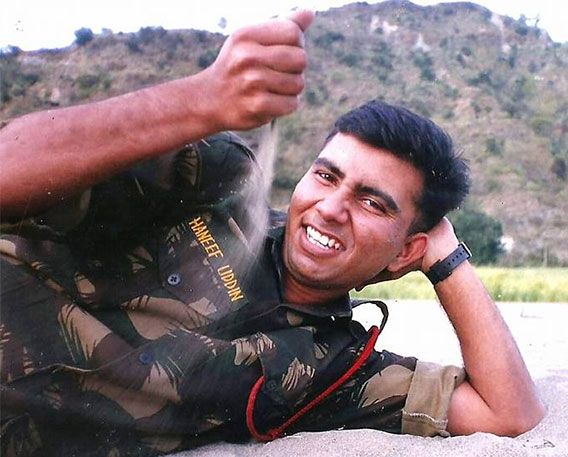'Captain Haneef-ud-din, pulling his sinewy body forward, crawled, rifle in hand, in the snow on 6 June 1999. He died on this craggy mountainside exactly two years after he had passed out of the IMA.'
'He had gone to fight for the 11 Rajputana Rifles whose war cry is 'Raja Ram Chandra ki Jai.'
A must read excerpt from Rachna Bisht Rawat's new book Kargil-Untold Stories from the War.
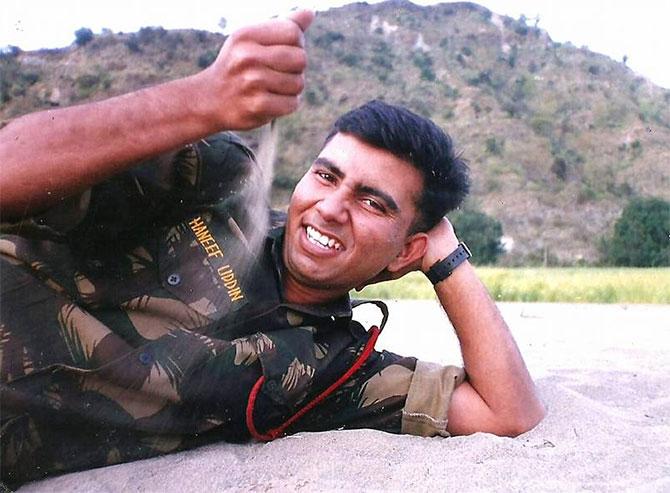
Turtuk
2018
Nineteen years have passed since the Kargil War. The Shyok, river of death in Yarkandi Uyghur, meanders through these vast forgotten lands before slipping into Pakistan and merging with the Indus at Skardu.
Adjacent to Subsector Haneef, named after the young officer who was martyred here at the age of 25, stands a small mosque.
Above the green lands, where apricot orchards grow and chubby children with alabaster skin and apple pink cheeks play, is an icy wilderness bordered by the formidable Karakoram range.
This is where Captain Haneef-ud-din, pulling his sinewy body forward, crawled, rifle in hand, in the snow on 6 June 1999. He died on this craggy mountainside exactly two years after he had passed out of the IMA.
It is poignant that this young boy with a Hindu mother and a Muslim father, who grew up celebrating both Eid and Diwali, died in a war between two countries that had been split on the basis of communal ideologies.
He had gone to fight for 11 Rajputana Rifles whose war cry is 'Raja Ram Chandra ki Jai'.
Haneef's body lay under the open sky and falling snow for 43 days, his handsome face frozen into a cold mask.
When then army chief General Ved Prakash Malik visited Mrs Hema Aziz, Haneef's mother, in her small Mayur Vihar apartment in Delhi and told her the body could not be retrieved because the enemy was firing constantly, she met his eyes bravely and said she did not want another soldier to risk his life to get her son's body back.
"After the war is over I would like to go and see where he died," she said.
General Malik assured her that she would be able to.
Haneef's body was eventually retrieved. He was buried with full military honours in Delhi. Mrs Hema Aziz made the pilgrimage with her other two sons to Turtuk, going all the way to see where her son, who used to laughingly complain that she never had time for him, had given up his life for his country.
This time, he was not around to see her.
***
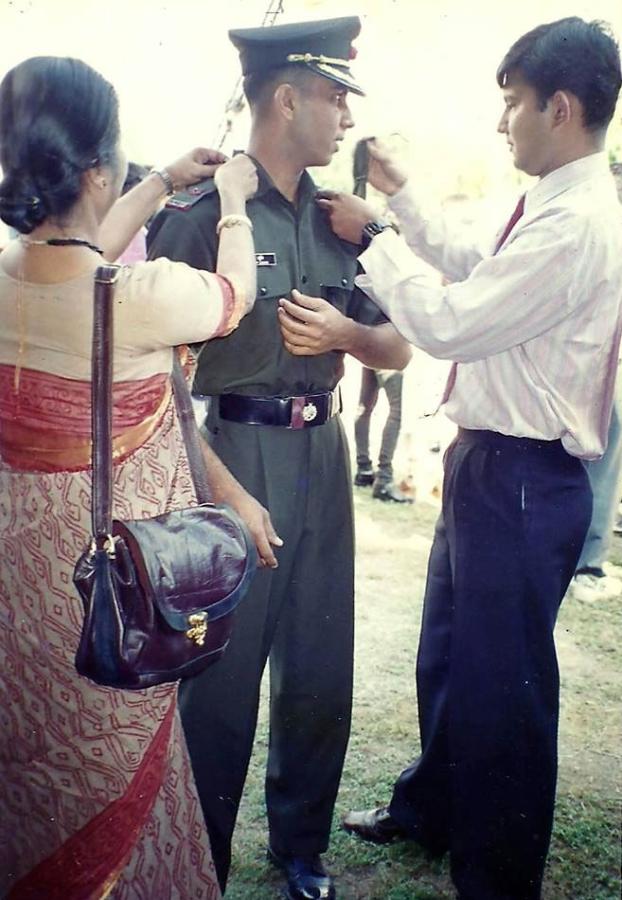
'We Shall Retrieve the Bodies of Our Martyrs'
By 7 July, nearly a month after Haneef died, 11 Rajputana Rifles completes its Siachen tenure and is de-inducted from the glacier. Colonel Bhatia (the commanding officer) is furious about the loss of his men and is raging like an injured lion.
The unit reaches Turtuk on 10 July. Colonel Bhatia moves to Zangpal, takes a week to study the position of the enemy posts, and then gives himself his first task.
"We shall retrieve the bodies of our martyrs," he tells his men.
Operation Amar Shaheed is launched.
On 18 July, 43 days after Haneef dies, Captain S K Dhiman, Major Sanjay Vishwas Rao, Lieutenant Ashish Bhalla, Havaldar Surinder and Rifleman Dharam Vir volunteer for the task and leave Zangpal at last light, crossing over to the glacier nearly 6 km away.
Carefully negotiating the deadly precipices, the soldiers manage to locate Haneef and Parvesh, and extricate the frozen bodies. Dragging them behind boulders, and then carrying them on their backs, they walk quietly through the night, reaching Zangpal by 7 am.
A helicopter lands the next morning and carries the bodies away as Colonel Bhatia watches the body bags with moist eyes. Subedar Mangesh's body still lies in a crevasse.
"We will get you soon, Mangesh," Colonel Bhatia makes a silent promise to the dead soldier. That promise is fulfilled when the battle is finally over.
The troops of 11 Rajputana Rifles now plan to avenge the deaths of their comrades by attacking and capturing Point 5590.
Colonel Bhatia starts planning the assault on Point 5590 which is to be called Operation Haneef.
***
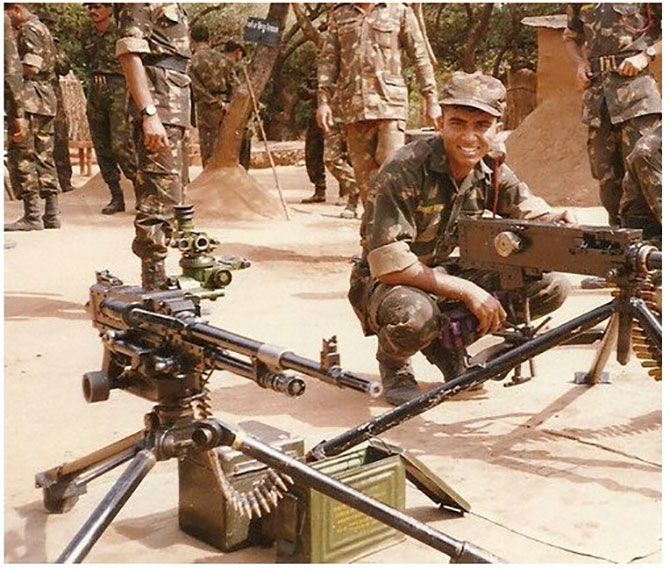
Though a very high casualty rate had been expected, 11 Rajputana Rifles loses one man in this operation. This in spite of the fact that the unit had been at a complete disadvantage -- the soldiers were fatigued and were climbing up to fight a well established enemy, they had no intelligence on how many soldiers waited for them on the heights and with what weapons.
Since the war has been declared over by the time this daring operation takes place, the unit does not get many gallantry awards.
"We avenged our comrades, that was our greatest reward," says Colonel Bhatia, sipping his coffee as we close the interview.
***
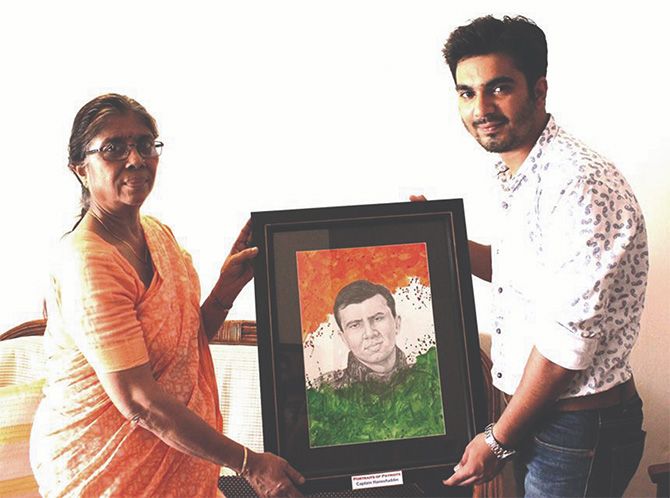
December 2018
Kargil Apartments
Dwarka
It is a cold foggy morning when I park my car and call Mrs Hema Aziz for directions to her flat.
"I am on the upper floor," she says.
I look up to find a graceful, elderly lady in a black salwar kameez smiling down at me from the first floor.
She invites me into her modestly furnished flat where a photograph of Captain Haneef-ud-din, VrC, in uniform looks at us from an otherwise bare wall. A portrait sits on a bookshelf, his handsome face flanked by the Tricolour, a gift from artist Hutansh Verma who paints portraits of martyrs and hand delivers them to their families.
The door to the balcony is open, allowing Delhi's winter chill inside. My fingers feel like wood as I take down notes, but Mrs Aziz doesn't seem to notice the cold.
More than once, during that conversation that stretched into a few hours, I wanted to request her to close the door, but each time I was reminded that her son's body lay in the snow for 43 days, and keep quiet instead.
***

'It Was His Destiny'
"Soldiers don't go to the battlefield to die, they go to fight. Haneef had opted to be a soldier. He had taken a pledge to always place his country before his own self; he had to honour it," Mrs Aziz tells me, her face soft yet firm.
"I am proud of my son. There cannot be a greater statement on his valour than his death which came while fighting the enemy. There are so many soldiers who came back alive from the war. I am happy for them. It was Haneef's destiny to not return and I accept it. He has been an inspiration to so many. Even though his life was short, it was meaningful," she says.
Mrs Hema Aziz lives alone in her apartment in Delhi. She does not take music classes any more but every morning, strains of the tanpura waft out of her open window as she sits doing her riyaaz.
This is the time when she closes her eyes and is lost in a world that is still beautiful for her where her son Haneef probably smiles again.
Author's Note
The initial intrusion in Turtuk sector was detected by a patrol of 12 Jat.
The main battle was fought later by 11 Rajputana Rifles during July-August 1999, ending when the unit captured Point 5590.
Due to lack of communication and rugged terrain, these operations were not covered by the media in detail and thus never came into the public eye. Taken from Kargil 1999, The Impregnable Conquered, written by Lieutenant General Y M Bammi.
For his gallant action and bravery of an exceptionally high order in the face of the enemy, Captain Haneef-ud-din was awarded the Vir Chakra posthumously and Subsector West was renamed Subsector Haneef in his honour.
Captain Anirudh Chauhan and Rifleman Kishen Kumar were awarded Sena Medals for their inspiring bravery.
Kindly excerpted from Kargil-Untold Stories from the War by Rachna Bisht Rawat, with the publisher Penguin Random House India's kind permission. The book will be available online and in stores in August.
Rachna Bisht Rawat's previous books are: The Brave: Param Vir Chakra Stories,1965: Stories from the Second Indo-Pak War, Shoot. Dive. Fly.
